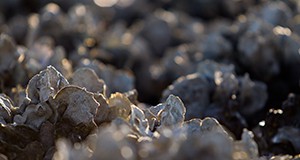 Florida’s economically important estuaries could be heavily impacted by sea-level rise and altered river flow, both caused by climate change. The resulting higher salinity, or saltiness of the water, could harm plants and animals, alter fish and bird habitat, and reduce the capacity of estuaries to provide such important services as seafood production and the protection of shorelines from erosion. This 6-page fact sheet explains the importance of estuaries, salinity in estuaries, and provides examples of stress from extreme high salinity. Then it explores the projected change in climate that could affect salinity in estuaries, how plants and animals would be affected, mitigating effects, and other impacts of climate change on estuaries. Written by Karl Havens, and published by the UF Department of Sea Grant, June 2015.
Florida’s economically important estuaries could be heavily impacted by sea-level rise and altered river flow, both caused by climate change. The resulting higher salinity, or saltiness of the water, could harm plants and animals, alter fish and bird habitat, and reduce the capacity of estuaries to provide such important services as seafood production and the protection of shorelines from erosion. This 6-page fact sheet explains the importance of estuaries, salinity in estuaries, and provides examples of stress from extreme high salinity. Then it explores the projected change in climate that could affect salinity in estuaries, how plants and animals would be affected, mitigating effects, and other impacts of climate change on estuaries. Written by Karl Havens, and published by the UF Department of Sea Grant, June 2015.
http://edis.ifas.ufl.edu/sg138